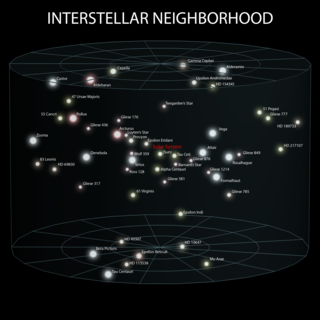
This list of nearest bright stars is a table of stars found within 15 parsecs (48.9 light-years) of the nearest star, the Sun, that have an absolute magnitude of +8.5 or brighter, which is approximately comparable to a listing of stars more luminous than a red dwarf. Right ascension and declination coordinates are for the epoch J2000. The distance measurements are based on the Hipparcos Catalogue and other astrometric data. In the event of a spectroscopic binary, the combined spectral type and absolute magnitude are listed in italics.
Contents
- Stars within 10 parsecs
- Stars between 10 and 13 parsecs
- Stars between 13 and 15 parsecs
- See also
- References
- External links
The list is ordered by increasing distance.
| A-type star |
| F-type star |
| G-type star |
| K-type star |
| M-type star |